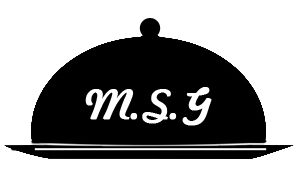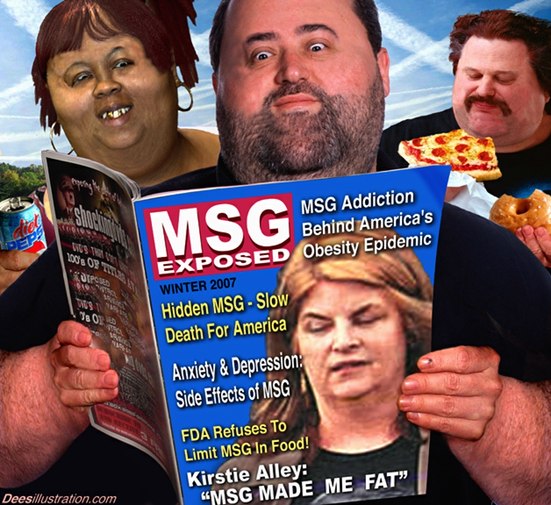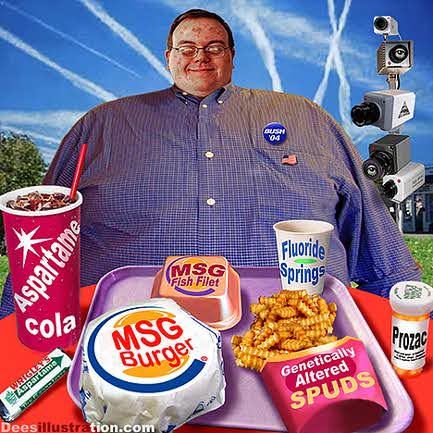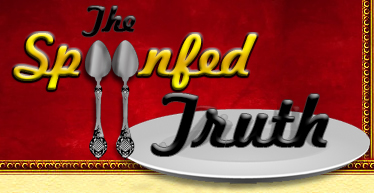
MSG is a product produced from fruits vegetables, grains, fish, meat, poultry, and/or bacteria. When used in pharmaceuticals it is called a pharmaceutical. When used in food, it is called a food. Often, but not always, MSG is used in processed food as a flavor enhancer. Simply stated, MSG is glutamic acid that has been manufactured in a food or chemical plant or created by fermentation. In every case, the glutamic acid that has been manufactured in food or chemical plants or created by fermentation is accompanied by unwanted byproducts of manufacture referred to as impurities. Unprocessed/unadulterated/unfermented protein in any meat, fish, fruit, grain, vegetable etc., contains glutamic acid but no impurities. Unprocessed/unadulterated/unfermented mushrooms and tomatoes contain glutamic acid, but they do not contain MSG.
Prior to 1957, MSG was made by extracting glutamic acid from protein. Some MSG is still made that way, but since 1957, MSG has also been produced using genetically modified bacteria (genetically modified organisms or GMO’s), that secrete glutamic acid through their cell walls. MSG can be extracted from any food that contains protein. Similarly, when any protein is fermented, MSG (glutamic acid that has been released from protein by the fermentation process) will be formed.
The key to understanding MSG lies in understanding the fact that MSG is a product (something manufactured or processed), not a substance found in nature without adulteration (changing) it. Regardless of the way in which it was produced, MSG contains unwanted substances referred to as impurities.
MSG causes adverse reactions in people who ingest amounts that exceed their tolerances for the substance. Unadulterated, unprocessed, unfermented protein, which contains glutamic acid, does not cause adverse reactions. Ingredients that contain MSG can be added to processed foods, or MSG can be formed or created during processing.
By FDA definition, processed free glutamic acid (MSG) is "naturally occurring," because the basic ingredients are found in nature. "Naturally occurring" does not mean that a food additive is being used in its natural state. "Naturally occurring" only means that the food additive began with something found in nature. By FDA definition, the ingredient "monosodium glutamate" is natural. So is hydrochloric acid. So is arsenic. "Natural" doesn't mean "safe."
By FDA definition, processed free glutamic acid (MSG) is "naturally occurring," because the basic ingredients are found in nature. "Naturally occurring" does not mean that a food additive is being used in its natural state. "Naturally occurring" only means that the food additive began with something found in nature. By FDA definition, the ingredient "monosodium glutamate" is natural. So is hydrochloric acid. So is arsenic. "Natural" doesn't mean "safe."


In general…
MSG can be used (and hidden) in processed foods, dietary supplements, cosmetics, personal care products, pharmaceuticals, and the food that is given to pets and other animals. It can be used in waxes applied to fresh fruits and vegetables. It can be used as ingredients in pesticides, fungicides, fertilizers, and plant growth enhancers -- remaining in the edible portion of the plant or on the edible portion of the plant when its leaves, fruits, nuts, grains, seeds, and other edible parts are brought to market.
There are over 40 food ingredients besides "monosodium glutamate" that contain processed free glutamic acid (MSG). Each, according to the FDA, must be called by its own, unique, "common or usual name." "Autolyzed yeast," "maltodextrin," "hydrolyzed pea protein”, and "sodium caseinate" are the common or usual names of some ingredients that contain MSG. Unlike the ingredient called "monosodium glutamate," they give the consumer no clue that there is MSG in the ingredient.
In addition to ingredients that contain MSG, some acids and enzymes when combined with a food that contains protein will produce MSG. The words "enzyme” and "protease” (which is a type of enzyme) signal the presence of enzymes capable of causing the production of MSG.
In particular…
- Low fat and no fat milk products often contain milk solids that contain MSG. Other dairy products often contain carrageenan, guar gum, and/or locust bean gum. Low fat and no fat versions of ice cream and cheese may not be as obvious as yogurt, milk, cream, cream cheese, cottage cheese, etc., but they are not exceptions.
- Protein powders and protein drinks contain glutamic acid, and the glutamic acid in the protein powders and drinks will always be processed (manufactured) free glutamic acid (MSG). Individual amino acids are not always listed on labels of protein powders and drinks.
- At present, there is an FDA requirement to give the name of the protein source when listing hydrolyzed protein products on labels of processed foods. Examples are hydrolyzed soy protein, hydrolyzed wheat protein, hydrolyzed pea protein, hydrolyzed whey protein, hydrolyzed, corn protein. If a tomato, for example, were whole, it would be identified as a tomato. Naming an ingredient "tomato protein” indicates that the tomato has been hydrolyzed, at least in part, and that processed free glutamic acid (MSG) is present.
- At present, the FDA requires the disclosure of ingredients labeled "monosodium glutamate” and "hydrolyzed…protein” when, as ingredients, they are used in a "flavor” or "flavoring” (whether or not the "flavor” or "flavoring” is preceded by the words "natural” or "artificial”). However, "flavors” and "flavorings” can contain MSG in ingredients other than "monosodium glutamate” and "hydrolyzed…Protein” without the MSG being disclosed.
- Disodium guanylate and disodium inosinate are relatively expensive food additives that work synergistically with inexpensive processed free glutamic acid (MSG). We believe that they would only be used if there was MSG in a product.
- MSG will be found in some soaps, shampoos, hair conditioners, and cosmetics, where MSG is hidden in ingredients with names that include the words "hydrolyzed," "amino acids," and/or "protein."
- Binders and fillers for prescription and non-prescription medications, nutrients, and supplements, may contain MSG.
- Enteral feeding materials, and some fluids administered intravenously in hospitals, may contain MSG.
- According to the manufacturer, Varivax–Merck chicken pox vaccine (Varicella Virus Live), contains L-monosodium glutamate and hydrolyzed gelatin, both of which contain processed free glutamic acid (MSG). It would appear that most, if not all, live virus vaccines contain some ingredient(s) that contains MSG.
- There are a number of ingredients identified as organic that, organic or not, will contain processed free glutamic acid (MSG). Autolyzed yeast, yeast extract, textured soy protein, and anything hydrolyzed are examples of ingredients that may be made from organic produce, but will never-the-less contain MSG.
- Drinks, candy, and chewing gum are potential sources of hidden MSG. They may also contain aspartame, neotame, of AminoSweet (the new name for aspartame). We mention aspartame, neotame, and AminoSweet here because they, like MSG, contain a neurotoxic amino acid, and can cause the same reactions that MSG causes.
- Aspartame will be found in some medications, including children's medications.
- Anything that breaks down the protein in a product can produce MSG as it breaks down that protein. There have been reports of people reacting to meat wrapped in Cryovac. Cryovac is a registered trademark for a thick plastic in which meat is sealed with the air removed by a vacuum pump. The word Cryovac is also used for the thermoplastic resin wrapping film which can be heat-shrunk onto foods.
- Some waxes used on fruits and vegetables contain MSG.
- Produce may have been produced using fertilizer or pesticide products that contain MSG. Some of these fertilizers may be organic. It is impossible to know from looking at produce whether or not it has been treated with an MSG-containing fertilizer or pesticide product that leaves residue in or on the produce.
- Some non-organic waxes used on some fruits and vegetables contain MSG.
- Additional sources of MSG include infant formula, kosher food, enteral feeding products (tube feeding products), dietary supplements, pharmaceuticals, protein drinks often recommended for seniors, protein bars and protein powders, vaccines, personal care products, protein powders sold in health food stores, food that is labeled "organic”, wine, food with labels that say "No Added MSG," "No MSG Added," or "No MSG" , food that is falsely advertised as containing no MSG, and in food whose manufacturers claim, in response to questions, that their products contain no MSG.
- MSG can be hidden by restaurateurs who claim that the food they serve contains no MSG
Click here to read more about "organic foods", health foods that contain MSG, and more
Ban MSG? Not a chance. If the FDA banned MSG, the drug companies would lose billions. Think about how much money they make treating asthma, migraine headache, seizures, depression, heart irregularities and all of the other reactions to MSG. And cancer, too. Acid hydrolyzed proteins contain carcinogenic propanols.
How are monosodium glutamate and the other ingredients that contain MSG manufactured?
How the "MSG is safe” game is played
How the "MSG is safe” game is played









